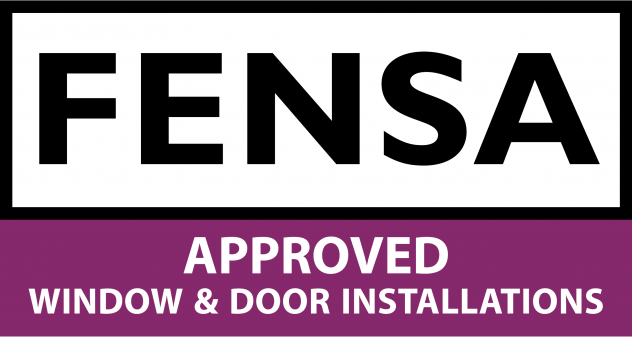So, How Long Do uPVC Windows Last?
When investing in new windows, many homeowners want to know one key thing: how long do uPVC windows last? It is a sensible question, especially as new windows can be a major home improvement expense. The good news is that uPVC windows are known for their durability, low maintenance, and long lifespan. In most cases, well-made and professionally fitted uPVC windows can last between 25 and 35 years, sometimes even longer with proper care.
This guide explains what affects the lifespan of uPVC windows, how to maintain them, and when to consider replacements.
What Are uPVC Windows?
uPVC stands for unplasticised polyvinyl chloride, a rigid and weather-resistant form of plastic used widely in the construction industry. It became popular in the UK during the 1980s as an alternative to timber, offering better insulation and lower upkeep. Today, uPVC is the most common material used for residential windows due to its strength, affordability, and resistance to moisture and decay.
At Skyway Windows, we supply and install high-quality uPVC windows in Surrey that meet modern standards for efficiency, appearance, and durability.
Average Lifespan of uPVC Windows
The typical lifespan of uPVC windows is around 25 to 35 years, but this can vary depending on a few important factors.
Quality of materials: Premium-grade uPVC lasts longer and resists discolouration or warping.
Installation: Poorly fitted windows can cause seal failures or leaks that shorten their life.
Climate: Homes exposed to harsh sunlight or coastal air may see faster wear.
Maintenance: Regular cleaning and lubrication of moving parts can extend their life considerably.
In normal conditions, well-maintained uPVC windows should last at least three decades before needing replacement.

Signs That Your uPVC Windows Need Replacing
Even the best-quality uPVC windows eventually show signs of wear. Some of the main indicators include:
Condensation between panes
If moisture forms between the panes, it is a sign the seal has failed. Once this happens, insulation is compromised, and the unit needs replacing.
Draughts and leaks
Cold air or water entering around the frame suggests the seals or gaskets have deteriorated.
Discolouration or cracking
Although modern uPVC is UV-resistant, older models can fade or become brittle over time.
Difficulty opening or closing
Stiff hinges or warped frames are early signs of wear that can worsen if left untreated.
Reduced energy efficiency
If you have noticed higher heating bills or cold spots near windows, the glazing or seals might no longer be performing effectively.
If any of these issues occur, it is worth getting a professional assessment to determine whether repair or full replacement is the best option.
What Affects the Lifespan of uPVC Windows?
Quality of Manufacture
Not all uPVC windows are the same. High-quality uPVC is reinforced with additives that improve UV stability and resist warping, while cheaper alternatives may become brittle sooner. Look for windows with a British Standard Kitemark (BS EN 12608) for reassurance that they meet durability standards.
Installation Quality
Even the best materials will not last if installed incorrectly. Poor sealing, misaligned frames, or substandard fixings can cause early failures. Always use a FENSA approved installer to ensure your installation meets UK regulations and is backed by certification.
Exposure and Location
Homes in coastal or high-sunlight areas can experience faster uPVC degradation due to salt, UV rays, and temperature fluctuations. However, modern uPVC windows are treated to resist these effects, ensuring they perform well across different climates.
Maintenance Routine
Although uPVC is low-maintenance, it still benefits from occasional care. Cleaning, checking seals, and keeping hinges lubricated can make a huge difference to lifespan and function.
How to Maintain uPVC Windows for Longer Life
Clean the frames regularly
Wipe down frames with warm, soapy water and a soft cloth every few months to remove dirt, dust, and pollution buildup. Avoid using harsh chemicals, as they can damage the finish.
Keep moving parts oiled
Hinges, handles, and locks should be lubricated annually with a light silicone-based spray to prevent stiffness.
Check seals and gaskets
Inspect rubber seals for cracks or shrinkage. Replacing worn gaskets prevents draughts and moisture ingress.
Clean the glass and drainage channels
Make sure drainage holes at the bottom of frames remain clear, especially after storms. Blocked channels can cause leaks and internal condensation.
Avoid painting or drilling the frames
uPVC does not need painting, and drilling into it can compromise its waterproofing. If you want a new look, consider installing flush windows or coloured uPVC options instead.
With simple care, your windows can maintain their appearance and performance for many years.
The Role of Double and Triple Glazing
Most modern uPVC windows are fitted with double glazing, which provides an excellent balance between energy efficiency and cost. The sealed unit between two glass panes contains argon gas to insulate your home.
For those seeking even greater insulation, triple glazing is also available. While more expensive, it can improve energy performance and soundproofing, particularly useful for busy or exposed areas. If you are comparing options, our guide on the difference between double and triple glazing can help you decide which suits your property best.
Energy Efficiency and Long-Term Value
uPVC windows play a major role in reducing heat loss and improving your home’s energy performance certificate (EPC) rating. The multi-chambered frame design helps trap warm air, while modern glazing units prevent thermal transfer.
Replacing old single-glazed or worn-out windows with energy-efficient uPVC models can cut heating bills by up to 20 percent and increase your home’s value. Combined with features like Low-E glass and warm-edge spacers, the performance of today’s uPVC windows rivals even more expensive materials.
Alternatives to uPVC Windows
While uPVC remains the most popular material in Surrey, other options are available depending on your property’s style.
Timber windows: Ideal for period homes, offering a natural and traditional finish.
Aluminium windows: Slim, modern, and strong, excellent for contemporary homes.
Bay windows: Add character and light while maintaining efficiency.
Each material has its own advantages, but uPVC continues to be the top choice for low-maintenance and long-lasting window solutions.
When to Replace uPVC Windows
Even though uPVC lasts for decades, there will come a time when replacement is the most cost-effective choice. Signs it is time to replace include:
- Frequent draughts or leaks
- Damaged or discoloured frames
- Increasing energy bills
- Outdated glazing that does not meet modern standards
Replacing them with upgraded models ensures improved insulation, better security, and refreshed kerb appeal. New casement windows or sash windows can also enhance your property’s character while improving efficiency.
Environmental Benefits
Modern uPVC is fully recyclable, making it an environmentally responsible choice. Many manufacturers now reuse uPVC offcuts and old frames to create new products, reducing waste and carbon emissions. Choosing a reputable installer helps ensure that your old windows are recycled properly rather than sent to landfill.
Conclusion
So, how long do uPVC windows last? With quality materials, professional installation, and a little maintenance, most uPVC windows in Surrey can last between 25 and 35 years, sometimes longer. They offer an affordable, energy-efficient, and long-term investment that enhances both comfort and property value.
If your existing windows are starting to show signs of wear or you are thinking about upgrading, contact Skyway Windows today. As trusted local specialists, Skyway Windows supply and install premium uPVC and aluminium windows that deliver style, security, and efficiency designed to last for decades.




